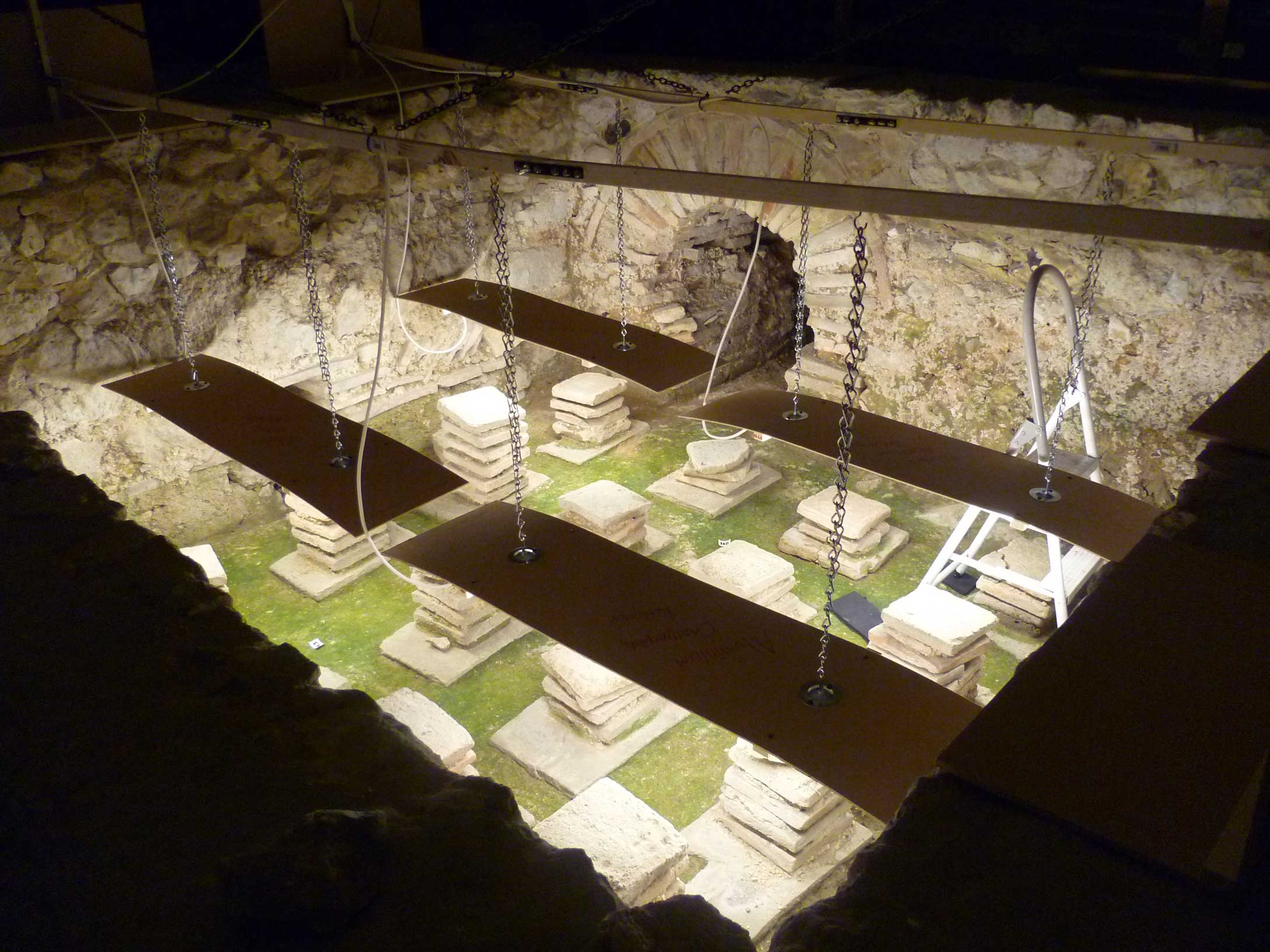Control of Biological Growth on Masonry
Research into the effectiveness and sustainability of methods for controlling biological causes of deterioration in historic stone and brickwork
We want to find solutions that are kinder to the historic masonry and more environmentally friendly.
Historic England and our partners have several initiatives to research the control of micro-organic growth (such as bacteria, algae and fungi) and higher plants (such as lichen and moss) that frequently exist on porous stone and brick. We want to better understand the effectiveness of current methods and find solutions that are kinder to the historic masonry and more environmentally friendly.
Damaging growths
Organic growths contribute to the natural, aged patina that gives masonry its appealing aesthetic on historic structures. However, moss indicates and sustains high moisture levels, which can damage masonry, and some lichen and bacteria actively cause deterioration. Algae provide nutrients for other biological growth and the discolouration which they cause is often unsightly and disfiguring. Changes in climate, particularly in temperature and in the frequency and intensity of rainfall, are resulting in an observed increase in ‘greening’, indicating more active algal colonisation.
Public perception finds this discolouration unacceptable, leading to a desire to remove it through cleaning.
Cleaning may not always be the right answer
Cleaning is not only costly, but potentially exposes the masonry surfaces to damaging intervention. Conventional cleaning with water is effective, but this seemingly benign intervention causes some loss of the surface, and overzealous cleaning (for example, with high pressure jets) can cause roughening of the surface as well as significant damage.
Frequent cleaning might satisfy public demand, but threatens the durability and survival of the fabric.
Risks of existing chemical treatments
Algicide, biocides and bioinhibitors have been used regularly in conjunction with other cleaning methods to kill biological growth and reduce its regrowth. Commonly based on quaternary ammonium compounds (QACs) that have been proven to be harmful to the environment and wildlife, their use is becoming more restricted through Health and Safety legislation. Moreover, their performance and longer-term efficacy has been observed to be extremely limited.
Testing the effectiveness of chemical treatment
Consultants commissioned by Historic England are carrying out research to understand the effectiveness of currently available proprietary biocides and whether they have any longer-term influence on the condition of the masonry. Our consultants are using four techniques to measure and monitor the presence of organic growth.
- ATP (adenosine triphosphate) luminometry, which measures the type of molecule present in growing micro-organisms
- sugar analysis to measure the amount of nutrients present
- photography and photospectrometry to measure surface colour change
These small-scale trials have identified that some proprietary biocides are more effective than others on the natural stones tested - Portland and Lincolnshire limestones.
Early results indicate that some of these biocides stop being effective after three months.
However, even those that kill algae only restrict the regrowth of bacteria and fungi. The monitoring of the performance of the biocides will continue, collecting data for several more months.
We also intend to explore further partnership research into other biocidal applications, such essential oils and enzymes.
These trials also reveal that the chemical and physical properties of the stone surface (either directly or due to their influence on the micro-organic growth) and surface orientation (horizontal or vertical) play a significant part in the effectiveness of the biocide treatment and the rate of recolonisation. Further investigation of the bioreceptivity of different natural stones is planned to better understand this occurrence.
Using ultra-violet irradiation to inhibit growth
With the limitations of chemical treatments, an alternative potential method of control is by ultra-violet C (UVC) germicidal irradiation. When applied by UVC lamps at sufficient dosage, the treatment causes genetic damage to microorganisms that impedes their reproduction. It is widely used in building services and the food and medical industries.
UVC offers real benefits over chemical treatments, as it is non-invasive, does not affect inorganic surfaces and has the potential to reduce regrowth over a longer period of time.
Historic England and its partners (the University of Portsmouth and Isle of Wight Council) are carrying out trials at Newport Roman Villa to determine the potential, limitations and parameters of the technology on historic masonry surfaces. It offers real benefits over chemical treatments, as it is non-invasive, does not affect inorganic surfaces and has the potential to reduce regrowth over a longer period of time. However, as it is dangerous technology, it needs to be subject to stringent health and safety risk assessments and controls. Therefore, it can really only be used indoors.
Results are positive to date, indicating that it can be an effective method of eradication and control, by means of regular re-treatment. Further research aims to identify potential limitations and risks that may occur on other sites. Guidance on its use will eventually be published.
About the authors
John Stewart
Senior Architectural Conservator, Historic England
John Stewart trained in architectural history and conservation and is currently employed at Historic England. He is carrying out trials of the control of microbiological grown on masonry with UVC irradiation and research in the conservation of fibrous plaster. He was co-editor the Historic England book Mortars, Renders & Plasters in the Practical Building Conservation series.
Clara Willett
Architectural Conservator, Historic England
Clara worked as a hands-on conservator and manager in private practice for almost a decade and has been with Historic England for another fifteen years. In her role as an architectural conservator she brings experience in the deterioration and conservation of various materials: stone, render, lime mortars and terracotta. She manages the nationwide building stone database project: the Strategic Stone Study. She co-edited and contributed to the Earth, Brick and Terracotta book in the Practical Building Conservation series.
Further information
Historic England current buildings conservation research pages





